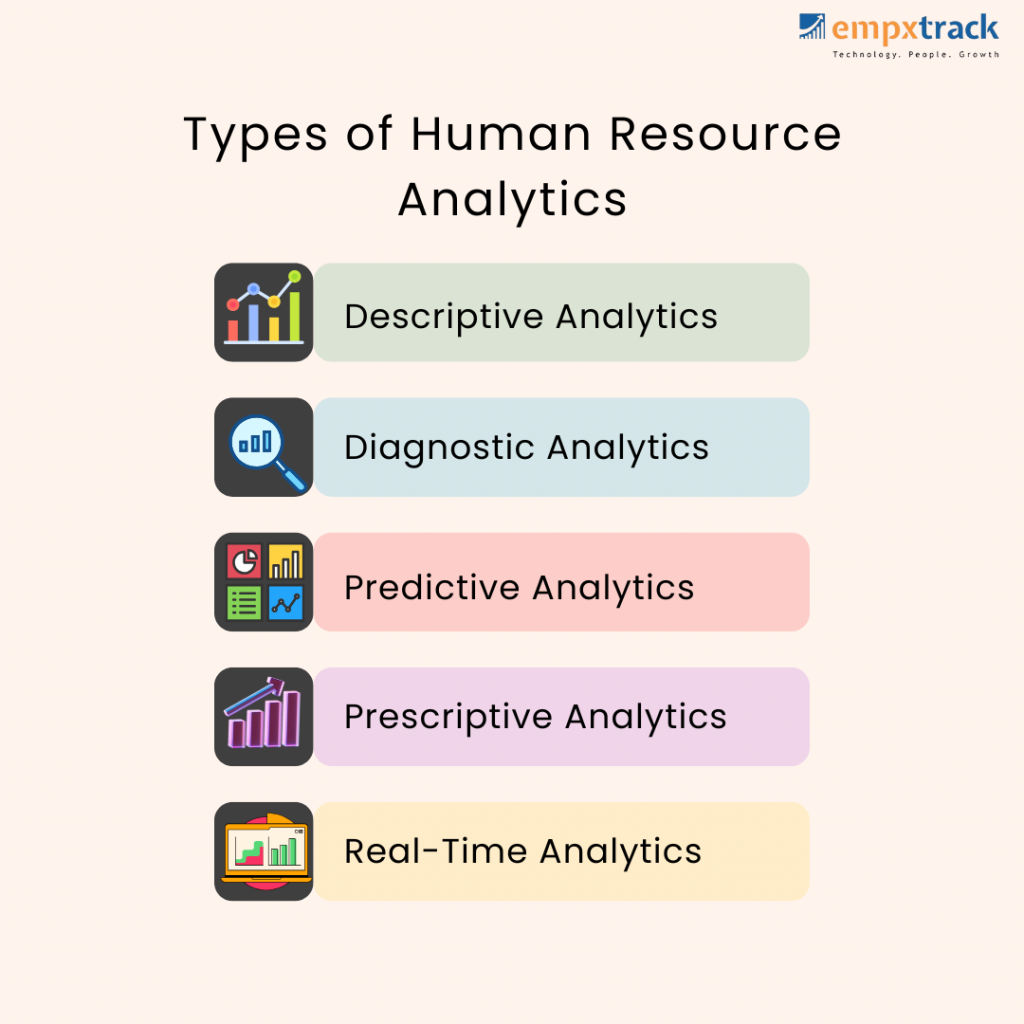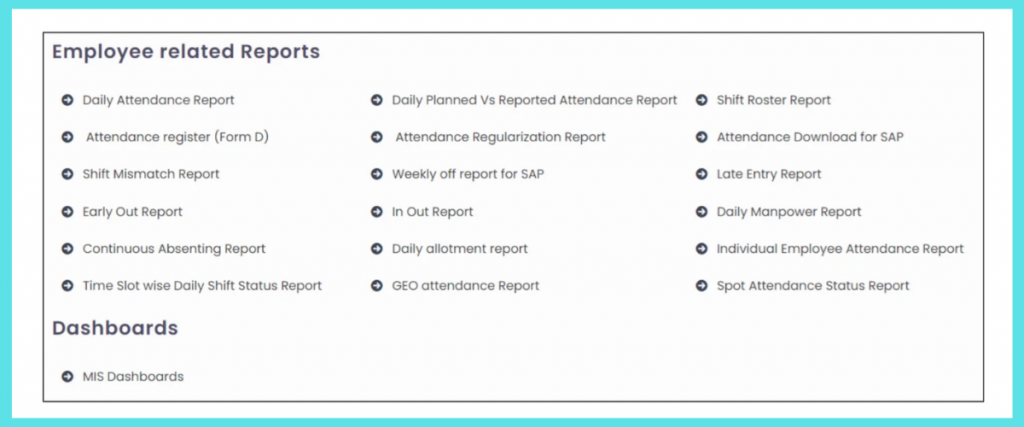With the evolving work environment, Human Resource Analytics is transforming how workplace decisions are made.
It is helping organizations transform workforce data into actionable insights and make strategic decisions that help build high-performing teams. The analytics is further enabling businesses to improve hiring, reduce turnover, strengthen employee engagement, and support long-term business growth.
A study by Gallup suggests that companies using data-driven engagement strategies experience 65% lower absenteeism and 21% higher profitability.
This clearly indicates how using data analytics can significantly increase workforce engagement and directly contribute to better business outcomes.
Now, let’s first understand what HR analytics actually means.
Table of Contents
What is Human Resource Analytics?
Human resource analytics is a concept that describes a process in the HR department that includes gathering, organizing, and evaluating workforce data.
By leveraging this data, companies can get workforce insights and make decisions that enhance employee engagement, productivity, and increase the overall organizational performance. This data can be further used to measure the impact of several HR metrics to improve workforce planning.
HR Analytics vs People Analytics
Although both the terms human resource analytics and people analytics are used interchangeably, there is a subtle difference.
HR analytics emerge from data housed within human resources and are targeted to optimize HR functions. In comparison, people analytics extends beyond HR to encompass data from other sources within the organization. Such as customer statistics, marketing and finance to address a broader range of business issues.
Importance of Human Resource Analytics
Human resource analytics enables organizations to clearly identify which HR strategies are delivering meaningful results. It gives professionals the insights they need to refine their practices and make improvements exactly where they will have the most impact.
The benefits of HR analytics extend far beyond numbers as they empower human resource teams in making informed, data-backed decisions that help them in various ways.
● Better Talent Acquisition: HR analytics help identify the best candidates by analyzing the recruitment data, including candidates’ profiles. Additionally, predictive analytics can be helpful for future hiring needs and identifying potential sourcing channels to attract suitable candidates.
● Competitive Pay: Data-driven insights help create fair and competitive pay packages that align with employees’ performance and prevailing industry standards.
● Improved Performance: HR professionals can gather and analyze data on employees’ performance. With this, they can identify high-performing employees and accordingly invest in training opportunities.
● Strategic Workforce Planning: Human resource analytics significantly enhances workforce planning by analyzing workforce skills, demographics, and succession planning data. With its help, you can easily identify skill gaps and develop talent pipelines to align the workforce with the organization’s goals.
● Employee Engagement & Retention: Employee engagement can be improved by analyzing the data on feedback, surveys, and workplace behavior. Through this, companies can understand the patterns influencing engagement, such as a lack of recognition or communication gaps. Analyzing and working on all these issues will lead to higher engagement and retention rates.
● Compliance Risk Reduction: It is easier to manage compliance risks more effectively with the help of analytics. This is because it provides real-time insights to identify potential gaps that may lead to non-compliance. It further helps in assessing and evaluating potential outcomes for non-compliance issues.
Types of Human Resource Analytics

Human resource analytics can be broken into five types. Each type offers a unique insight into the workforce. Here is a brief overview.
- Descriptive Analytics: This type of analytics provides an understanding of “what happened?” by using historical data. It answers straightforward questions and trends like “turnover rate” or “how many new employees joined the organization last year.”
- Diagnostic Analytics: It helps you understand the “why” behind the numbers. For example, if turnover rates increase, it can help highlight the possible causes, such as poor communication, compensation issues, or a lack of development opportunities.
- Predictive Analytics: This helps answer “what will happen?” This analytics helps guide better decision-making based on past and current practices. It uses machine learning and statistical models to anticipate outcomes, such as identifying employees at risk.
- Prescriptive Analytics: Strategically, it offers actionable recommendations that help organizations overcome challenges and achieve the best possible outcomes, such as enhancing training programs to improve productivity.
- Real-Time Analytics: This involves assessing HR data in real time, thus allowing teams to make quicker decisions. It is used for monitoring HR metrics, detecting potential issues as they arise, and responding to workforce changes instantly.
Key HR Analytics Metrics
Data analytics in human resources uses different kinds of metrics in order to make decisions that would benefit the workforce and the organization. Some of these are:
Time to hire: It is an exceptional way of determining how efficient your hiring process is and what adjustments and changes are needed to attract talent faster.
Time to fill: The focus of this metric is on the entire hiring process. It helps you in evaluating how smoothly your recruitment strategy works and also helps identify any delays that might be affecting and slowing down the process.
Cost per hire: This metric breaks down the cost that is incurred on hiring a candidate, for example, advertising, recruitment, and onboarding costs. It helps you evaluate the financial efficiency of your hiring process.
Revenue per employee: It provides a straightforward view of overall productivity and highlights how effectively your workforce contributes to financial performance.
Offer acceptance rate: A higher offer acceptance rate is an indication that your organization’s employer branding, compensation strategy, and candidate experience are helping you attract talent.
Employee net promoter score (eNPS): eNPS assesses the likelihood that employees would recommend your organization as an excellent place to work. It serves as a straightforward yet impactful indicator of employee satisfaction and loyalty.
Absenteeism rate: It evaluates how often employees are away from work without notice. It can highlight areas for improvement in employee engagement, well-being, or workplace conditions.
Turnover rate: Regularly monitoring turnover provides valuable insights into which departments, roles, or managers experience higher attrition. These, in turn, help you identify patterns and take action to improve retention.
Diversity metrics: It helps evaluate the effectiveness of diversity, equity, inclusion, and belonging (DEI&B) initiatives, and highlights opportunities to improve hiring, retention, and career development strategies.
Real World Examples of Using HR Analytics
Here are some real-world HR analytics examples of how leading companies are using HR data and analytics to make better decisions and drive positive business growth.
The technology giant Google used predictive analytics in their recruitment efforts to reduce costs and shorten the hiring process.
Previously, candidates went through 15 to 25 rounds of interviews and testing. However, an analysis of the hiring process showed that Google could predict successful candidates with 86% accuracy using just four interviews, cutting both time and cost.
Moreover, Google also developed an algorithm to reassess previously rejected resumes, helping identify strong candidates for other suitable roles.
Under Armour
American athletic footwear and apparel company, Under Armour used an advanced workforce analytics tool to identify the causes of employee attrition and forecast resignations across its locations.
The insights revealed that 500 of its 5,000 employees were likely to leave within six months. The company successfully reduced actual attrition to 50% below the predicted level by addressing these drivers with improved retention strategies, including targeted incentives and rewards.
Saksoft
The global technology service provider Saksoft has also benefited from HR analytics.
Narayanan Subramanian, AVP Human Resources, Saksoft, shares how Empxtrack’s analytics and reporting have transformed their HR processes.
“Empxtrack has seamlessly streamlined our time tracking processes efficiently. The real-time reports and analytics provide actionable insights into employee hours, project timelines, and resource allocation. With customizations tailored to our business needs, Empxtrack has given our teams full visibility into project progress while ensuring accurate client billing.”
By leveraging the analytics, Saksoft is now making data-driven HR decisions, optimizing workforce productivity, and improving operational efficiency across teams.
Read the customer success story 👉
Thriveni
Amit Kumar Mishra, Assistant Manager-HR & IR, of Thriveni Group, a global mining company, has also stated how they have benefited from Empxtrack’s comprehensive reports and analytics.
“The detailed reporting feature is a game-changer. It provides all the necessary insights into attendance patterns, helping us make informed decisions and identify trends swiftly.”

Image: Customized reports to analyze employee data
Empxtrack provided real-time attendance data to their supervisors for better workforce management. Customized reports further helped in gaining insights into their employee data.
Read the customer success story 👉
Common Challenges in HR Analytics
Integrating Data from Multiple Sources
HR data is often scattered in different systems and formats. Hence, it can become difficult when it comes to merging this information as data volume and complexity grow.
Skill Gaps & Training Needs
HR teams may lack the analytical skills required to interpret complex datasets. Their misinterpretation of data can lead to poor decisions and missed opportunities. Besides, without proper tools and training, extracting meaningful insights becomes difficult.
IT & Infrastructure Limitations
Robust and scalable systems are needed for proper data collection, storage, and integration. As a matter of fact, smaller companies often struggle with the resources required to support analytics tools. To add to this, weak infrastructure increases the risk of data breaches, legal issues, and operational delays.
Privacy & Compliance Issues
HR has to handle sensitive personal information that must be protected at all times. Therefore, organizations must comply with regulations like GDPR, CCPA, and other local data laws. Moreover, issues such as employee surveillance, third-party access, and breach preparedness must be managed carefully.
Maintaining the Human Element
It is a fact that HR analytics supports decisions but cannot replace human judgment. Notably, over-reliance on algorithms can reduce empathy and fairness in HR practices. Only a balanced use of data and human insight can lead to more ethical and effective HR decisions.
Conclusion
The current HR environment is both data-centric and people-focused, which makes it necessary for organizations to rely on meaningful insights for better decision making. Essentially, HR data holds the insights that can help build strategies and best practices, which will result in more valuable HR services.
Empxtrack helps businesses stay ahead of workforce trends and challenges by combining intuitive technology with actionable insights powered by human resource analytics.
Frequently Asked Questions
Q1. | What is human resource analytics? |
| Ans. | HR Analytics, or workforce analytics, is a concept that is used to describe the process in the HR department that includes gathering, organizing, and evaluating workforce data. |
Q2. | Why is human resource analytics important? |
| Ans. | HR analytics enables building effective people strategies. Using these insights, HR teams can make informed decisions that strengthen pay practices, performance, workforce planning, engagement, and retention. |
Q3. | What are the 4 types of HR analytics? |
| Ans. | The four types of human resource analytics are descriptive, diagnostic, predictive, and prescriptive analytics. |
Q4. | What is the difference between HRIS and HR analytics? |
| Ans. | An HRIS (Human Resource Information System) serves as the central database that stores employee data such as payroll, benefits, and records. HR analytics, on the other hand, focuses on examining that data to identify trends, forecast outcomes, and guide strategic workforce decisions. |
Q5. | What are examples of HR analytics in companies? |
| Ans. | Companies use HR data and analytics in various ways. Such as predicting employee turnover, identifying high-performing talent, optimizing recruitment processes, and improving workforce planning. |
Q6. | What is the difference between HR analytics and people analytics? |
| Ans. | HR analytics emerge from data housed within human resources and are targeted to optimize HR functions. In comparison, people analytics extends beyond HR to encompass data from other sources within the organization, such as customer statistics, marketing, and finance, to address a broader range of business issues. |
Q7. | What tools are used in human resource analytics? |
| Ans. | Human resource analytics uses a range of tools, including HRIS platforms, workforce analytics software, applicant tracking systems (ATS), employee engagement, and performance management systems. Platforms like Empxtrack are also commonly used to generate insights, forecast trends, and support strategic decision-making. |
Q8. | What is an HR metrics dashboard? |
| Ans. | An HR metrics dashboard is a management tool that consolidates and summarizes HR reporting, information, and KPIs, helping track and analyze workforce metrics. This dashboard displays data such as hiring metrics, turnover rates, employee performance, engagement scores, and attendance patterns in one place. |
Q9. | How does predictive analytics support HR? |
| Ans. | HR Predictive analytics supports human resources by using machine learning and statistical models to analyze past and current workforce patterns. This enables HR teams to anticipate outcomes such as identifying employees at risk of leaving and to make proactive, data-backed decisions that strengthen workforce planning and retention. |




Fantastic blog with lots of useful ideas for HR data analytics! Loved the vision and context outline example.
Nice Info” keep it up all the best.